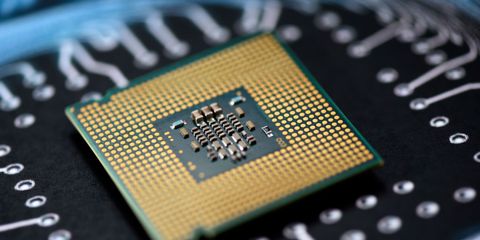Even if you haven’t been directly impacted – at least not yet – if you’re reading this post, you’re most likely aware of the current chip shortage. And, if nothing else, you’re most likely to have heard about the chip shortage with respect to the automotive industry. Many of the big automakers have announced shutdowns due to the lack of chips. Amazing to think that the production of end goods that cost tens of thousands of dollars have screeched to a halt because manufacturers can’t get a hold of a component that costs a few bucks! And of course, it’s not just the automotive industry that’s impacted. With the explosion of the Internet of Things, chips are pretty much embedded everywhere. This leads, of course, to greater demand for cloud computing and data center capacity. And 5G technology is rolling out, with demand for new smartphones that can take advantage of higher speeds.
automotive industry that’s impacted. With the explosion of the Internet of Things, chips are pretty much embedded everywhere. This leads, of course, to greater demand for cloud computing and data center capacity. And 5G technology is rolling out, with demand for new smartphones that can take advantage of higher speeds.
So how did the shortage come about?
When the pandemic first hit, there was a cascade of unanticipated events. It all started with market sectors such as automotive anticipating a drop in demand for their products, prompting them to reduce their demand for chips accordingly. Immediately, their freed-up capacity was claimed by markets that anticipated spikes in demand, such as PCs and electronics.
However, both the drop in demand and following recovery happened much quicker than anticipated. Soon enough, due to reporting delays in supply and demand across the entire value chain and capacity being already reallocated, many businesses ended up facing a chip shortage that halted their entire manufacturing process. (Source: EE Times)
There were several other events that contributed to the problem.
Texas is home to a number of large semiconductor foundries. When that state experienced disastrous power outages, production time was lost at several of them. Then there was a fire at a big Japanese fab.
Then there are the special circumstances that impact the automotive industry:
Over the past decade, foundries have focused their investments in leading nodes such as 5nm and 7nm due to their profitability and high demand from high tech companies. This resulted in a lack of investment in the older nodes that sectors such as automotive typically rely on, further aggravating the shortage by making it even more difficult to find capacity for older nodes somewhere else.
Moreover, the automotive industry has some of the most stringent requirements in their qualification process. Once chips are qualified, it’s not easy to move them to another fab due to the many processes involved and the longer time required to get to a steady state of production.
Intel, TSMC and Samsung are all investing in new plants, but there’s a lead time of a year or two before they’ll be operational.
Not surprisingly, Critical Link is feeling an impact of the chip shortage. And while I can’t deny that it’s been painful, we are faring better than others in our industry. That’s because we’ve been proactively managing build plans ahead of demand for years, and we have multi-pronged supply chains identified to keep material flowing. Even with those strategies in place, we still have team members dedicating some of their valuable time every day searching for the chips we need. Fingers crossed that everything that we’ve ordered gets delivered on time, and that we can continue to discover additional inventory as time progresses.
Like our colleagues everywhere, we are, of course, looking forward to supply catching up with – and even going well beyond – demand. Bring on the glut! In the meantime, it’s been a hassle. But so far, so good.
